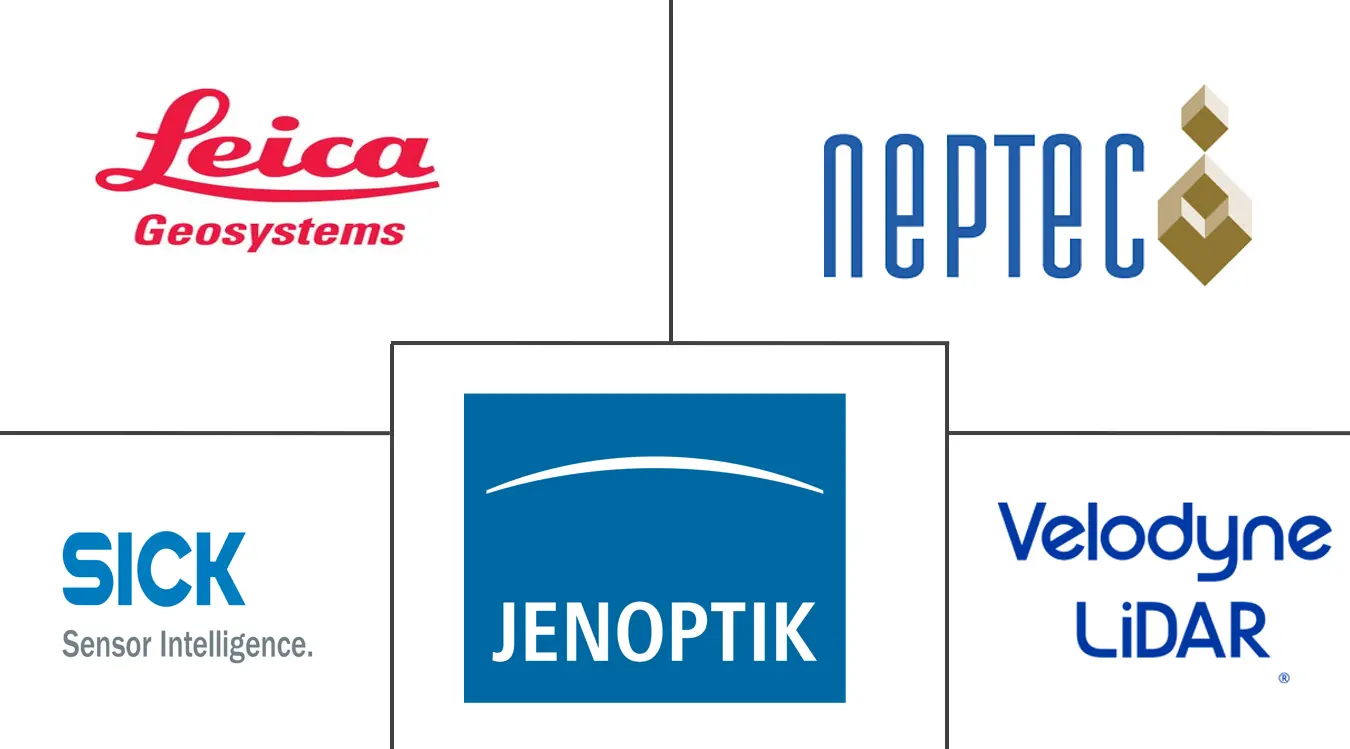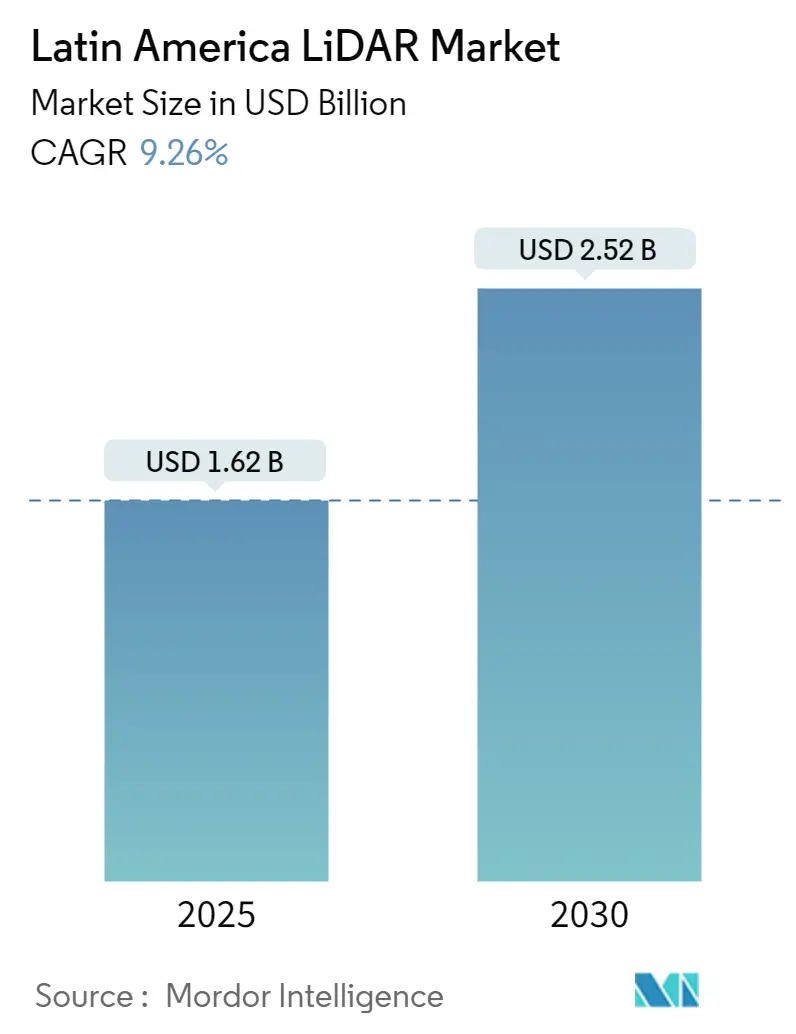
Latin America LiDAR Market Analysis by Mordor Intelligence
The Latin America LiDAR Market size is estimated at USD 1.62 billion in 2025, and is expected to reach USD 2.52 billion by 2030, at a CAGR of 9.26% during the forecast period (2025-2030).
Moreover, the lower cost of labor as compared to the United States and Europe attracted both local and international manufacturers toward the Latin American countries.
- LiDAR is increasingly being used by various agencies and institutions for mapping or tracing out of the archeological remains in the region, which is expected to boost the growth of this market. Several new cities are being explored, like the ancient Mayan city within the dense jungles of Guatemala. Additionally, archeologists, in 2018, discovered the civilization of Purépecha of Mexico. In September 2018, an open LiDAR portal was created at the city of Guadalajara.
- Companies like Intel is focusing on the autonomous vehicle space and are investing in Mexico to contribute significantly to the autonomous passenger vehicles in the market within 2023 or 2024. Hence these types of increasing investment will influence the growth of this market.
- The construction industry in Latin America is projected to remain strong over the next five years, which is supported by improving the business environment, low base effects, and a robust pipeline of projects. The construction industry is expected to grow faster, especially in Brazil and Panama, which is bolstered by the Panama Canal expansion, the construction of the metro, and the development of the Colon Free-Trade Zone. This growing construction industry is expected to drive the demand for LiDAR systems in this region.
- The government of Argentina is emphasizing on the importance of infrastructure for economic growth. It is planning to spend USD 16 billion over the next decade to fund new residential buildings, roads, renewal of regional airports, and rehabilitation of the Belgrano cargo rail line, which includes connections to ports of Chile on the Pacific. The government is also planning to improve transportation by building a metro line linking all modes of public transport in Buenos Aires.
- Additionally, the limited rail network is acting as a barrier to the development of unconventional energy, forcing producers to move materials by road, which is expensive. It is opening new opportunities for investing in rail infrastructure, which drives the market for LiDAR systems. However, the ongoing COVID 19 pandemic situation has disrupted the overall supply chain process of the major vendors for this market. Hence this pandemic situation can create a major restraint for the growth of this market.
Latin America LiDAR Market Trends and Insights
The Growing demand of Laser Scanner will Drive the Growth of this Market
- The demand for Laser Scanner is increasing rapidly in this region owing to its ability to develop 3D point clouds for a range of objects, like single molecules, clouds, aerosols, chemical compounds, nonmetallic items, and rocks. Moreover, Aerial scanning can also provide data to topographic maps, measuring snowpacks, measuring glacier decline and volcano uplift, determining forest biomass values, measuring tree canopy heights, measuring agricultural productivity, and others.
- Scanning is the principal purpose of the LiDAR system. A laser that is used to illuminate an object and analyze it belongs to a narrower wavelength, thus, giving a higher resolution output. Laser scanners are the most critical component of a LiDAR system, as they are the components that generate the essential input data.
- Major Vendors in this region are also following innovative strategies to gain some competitive advantage over others. In October 2019, RIEGL introduced multiple new product offerings regarding airborne laser scanning, terrestrial laser scanning, and UAV-based laser scanning. Two new airborne laser scanning solutions were introduced: the first one, the RIEGL VQ-780 II, is a waveform processing airborne laser scanner for wide-area mapping, designed for data acquisition of low, mid, and high altitudes with a pulse repetition rate of 2 MHz and more than 1.33 million measurements per second. The RIEGL VQ-1560 II offers an integrated airborne laser scanning system with a pulse repetition rate of 4 MHz for even higher productivity than the VQ-780 II scanner.
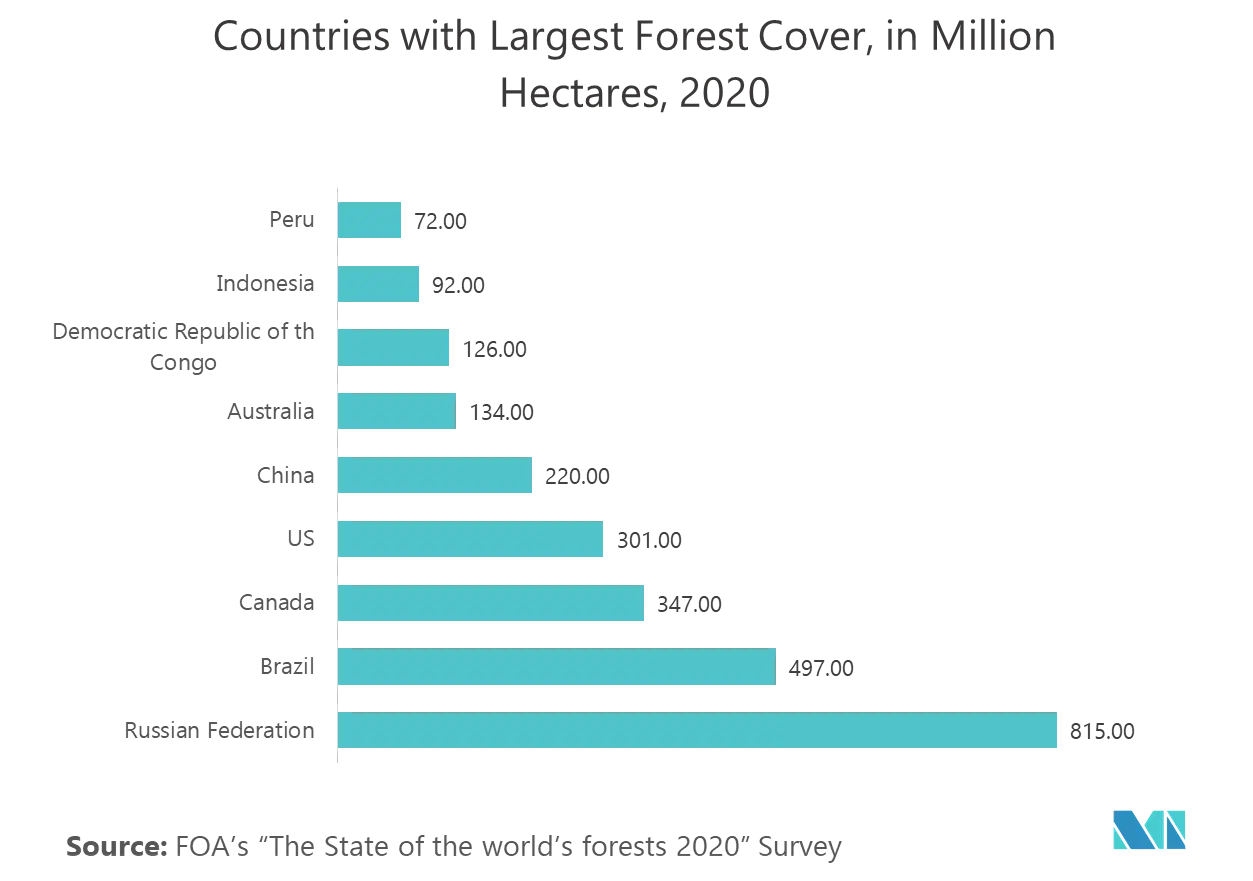
The Rapidly Growing Automotive Industry will Hold the Largest Market Share
- The Latin American region continued its evolution into an established automotive manufacture and sales hub. Government incentives and free trade agreements supported this. The automotive sales in this region are boosted by the growing population, increasing purchasing power due to the increasing economy, and increasing focus by the government on having in-house automotive production.
- Connected car technology is quickly expanding in Latin America, where penetration is anticipated to nearly quadruple in four years, growing from 3.3% in 2017 to 12.5% in 2022. The government program, such as “Inovar Auto,” designed to support the automobile industry innovation, is expected to boost the market.
- According to the Mexican Automotive Association (AMIA), the vehicle production rate in this region is increasing rapidly. Such increasing production and export trends indicate the scope for new investment technologies in the automotive industry. Brazil and Mexico are the major factors driving the industrial sector and the dependent LiDAR market in this region.
- Jeep Compass is the first SUV produced in Brazil with a level 1 autonomy, which is designed with ADAS features, like Emergency Braking, among others. With public safety being an issue in the Latin American region, the need for ADAS-equipped vehicles is expected to increase further. Hence this increasing trend of ADAS technology will definitely influence the growth of this market.
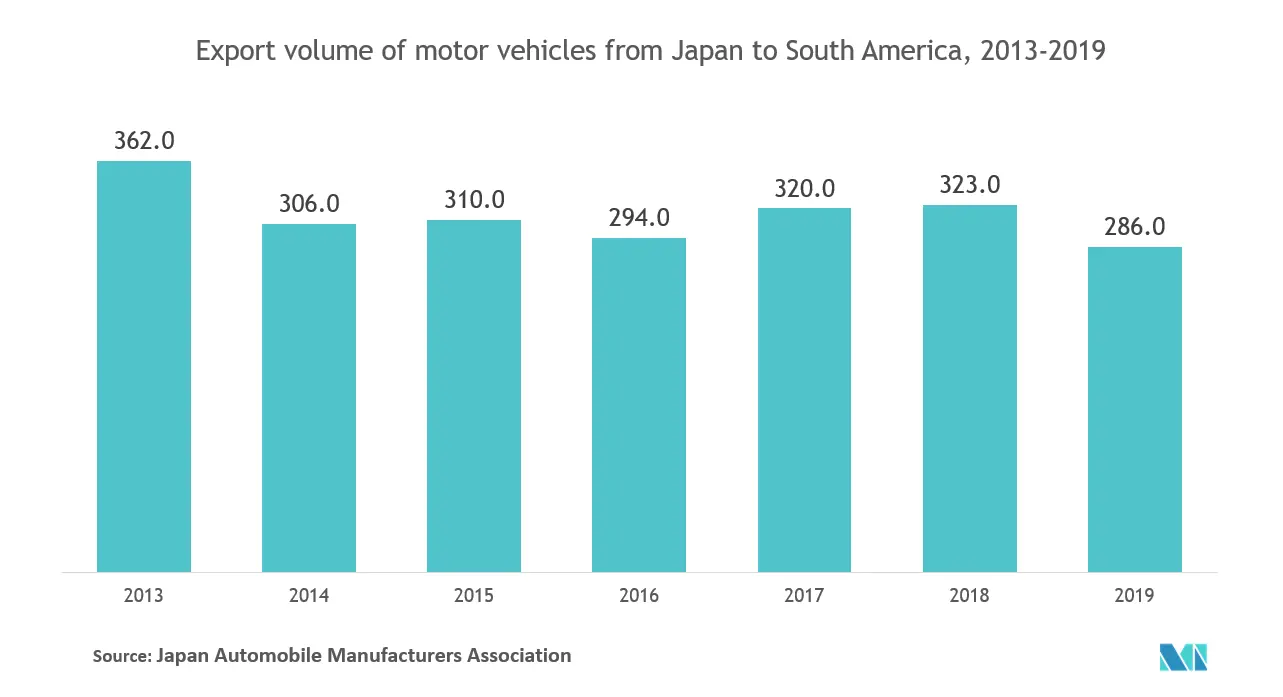
Competitive Landscape
The Latin America LiDAR is highly competitive owing to the presence of many players within this region. The major vendors in this region are focusing on strategic partnerships and acquisition strategies to create a unique differentiation from its other competitors. The major vendors in this market are Jenoptik Ag, Sick Ag, Velodyne Lidar Inc, etc.
- July 2020: Jenoptik completed its acquisition on Trioptics, which is a high-growth photonics company. According to this company this acquisition will not only increase the overall product portfolio of this company but also expands its overall customer base in the European region.
- March 2020: Velodyne Lidar Inc. announced a multi-year sales agreement with NAVYA, a leading company in autonomous driving systems. NAVYA plans to pursue the worldwide expansion of its shuttle with Velodyne's state-of-the-art sensors for precise real-time localization and object detection.
Latin America LiDAR Industry Leaders
Leica Geosystems Ag
Neptec Technologies Corp
Sick Ag
Jenoptik Ag
Velodyne Lidar Inc.
- *Disclaimer: Major Players sorted in no particular order
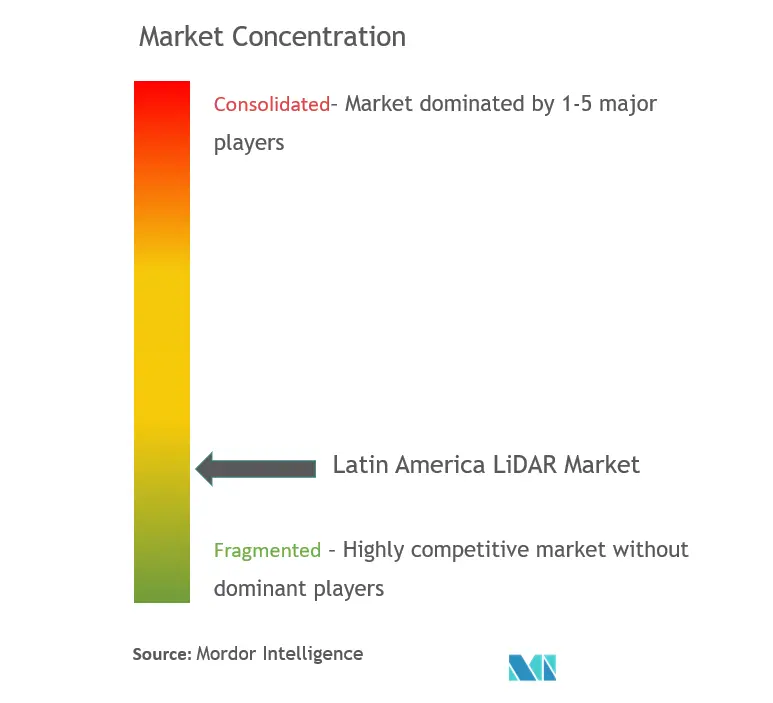
Latin America LiDAR Market Report Scope
LiDAR systems are helping scientists and mapping professionals to examine both natural and manmade environments with precision, accuracy, and flexibility. Moreover, LiDAR systems are also used in the sports industry like football for creating heat maps of team movement, speed, and distance between players, which can help trainers come up with better strategies. The Latin America LiDAR market is segmented in Product, Component, End-User.
| Aerial LiDAR |
| Ground-based LiDAR |
| GPS |
| Laser Scanners |
| Inertial Measurement Unit |
| Other Components |
| Engineering |
| Automotive |
| Industrial |
| Aerospace & Defense |
| Brazil |
| Mexico |
| Argentina |
| Rest of Latin America |
| Product | Aerial LiDAR |
| Ground-based LiDAR | |
| Components | GPS |
| Laser Scanners | |
| Inertial Measurement Unit | |
| Other Components | |
| End-User | Engineering |
| Automotive | |
| Industrial | |
| Aerospace & Defense | |
| Country | Brazil |
| Mexico | |
| Argentina | |
| Rest of Latin America |
Key Questions Answered in the Report
How big is the Latin America LiDAR Market?
The Latin America LiDAR Market size is expected to reach USD 1.62 billion in 2025 and grow at a CAGR of 9.26% to reach USD 2.52 billion by 2030.
What is the current Latin America LiDAR Market size?
In 2025, the Latin America LiDAR Market size is expected to reach USD 1.62 billion.
Who are the key players in Latin America LiDAR Market?
Leica Geosystems Ag , Neptec Technologies Corp, Sick Ag, Jenoptik Ag and Velodyne Lidar Inc. are the major companies operating in the Latin America LiDAR Market.
What years does this Latin America LiDAR Market cover, and what was the market size in 2024?
In 2024, the Latin America LiDAR Market size was estimated at USD 1.47 billion. The report covers the Latin America LiDAR Market historical market size for years: 2019, 2020, 2021, 2022, 2023 and 2024. The report also forecasts the Latin America LiDAR Market size for years: 2025, 2026, 2027, 2028, 2029 and 2030.
Page last updated on:
Latin America LiDAR Market Report
Statistics for the 2025 Latin America LiDAR market share, size and revenue growth rate, created by Mordor Intelligence™ Industry Reports. Latin America LiDAR analysis includes a market forecast outlook for 2025 to 2030 and historical overview. Get a sample of this industry analysis as a free report PDF download.
